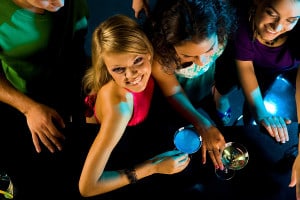 A glass of wine with dinner, a couple of cocktails with friends, a beer at a baseball game. These are the normal images many see when thinking of women who drink alcohol; that this gender is somehow less susceptible to overindulging in alcohol when compared to men. However, recent studies are proving that women are not only drinking more, but, they are binge drinking more, leaving many to question the reasons behind the trend.
A glass of wine with dinner, a couple of cocktails with friends, a beer at a baseball game. These are the normal images many see when thinking of women who drink alcohol; that this gender is somehow less susceptible to overindulging in alcohol when compared to men. However, recent studies are proving that women are not only drinking more, but, they are binge drinking more, leaving many to question the reasons behind the trend.
The Center for Disease Control reports that there are 23,000 alcohol-related deaths among women and girls each year. That includes deaths related to drunk driving accidents, alcohol poisoning and even long-term health issues like heart disease or breast cancer and more. With headlines screaming about the dangers faced by female drinkers under the age of 21, the possibility for unwanted sexual contact, assault and pregnancy are also factors in the problems that these statistics reflect. Even still, women are drinking more, putting their lives in danger, as well as those around them.
Some believe that the reason there are more women drinking is that it has become more socially acceptable. Through social and other media channels, it has become more accepted for women to be seen drinking or drunk. Other theories are that women are facing more pressures today, and are turning to alcohol to escape. The drinks being consumed are also thought to play a role – “hard” ciders that are marketed to women, or the “skinny” versions of drinks give the appearance of a lighter version of the “man’s drink,” but, these products end up being more intoxicating, simply through the different ingredients and the mindset of the “diet” drinker.
While there is nothing that says women should refrain from the same celebrated habits of men, physiologically, women are different, and process alcohol differently. The ability for a woman to process alcohol in the same way as a man is related to hormones and the muscle/fat ratio in the body, which is why two drinks can easily create a “buzz” for a woman, while a man may feel that sensation after three or four drinks. Since the definition of “binge drinking” allows for four or more drinks in a couple of hours for women (and five or more for men), it becomes obvious why this can be a problem.
Binge drinking continues to reflect a careless attitude toward alcohol and the choices that should not be made once a person has begun to drink. Women drinkers may be on the rise, statistically, which also is reflected in the higher numbers of DUI/DWI offenders who are women. By understanding the risks involved with binge drinking and the various ways alcohol affects people differently, we can call make safer choices when it comes to drinking alcohol.

Leave a Reply
You must be logged in to post a comment.